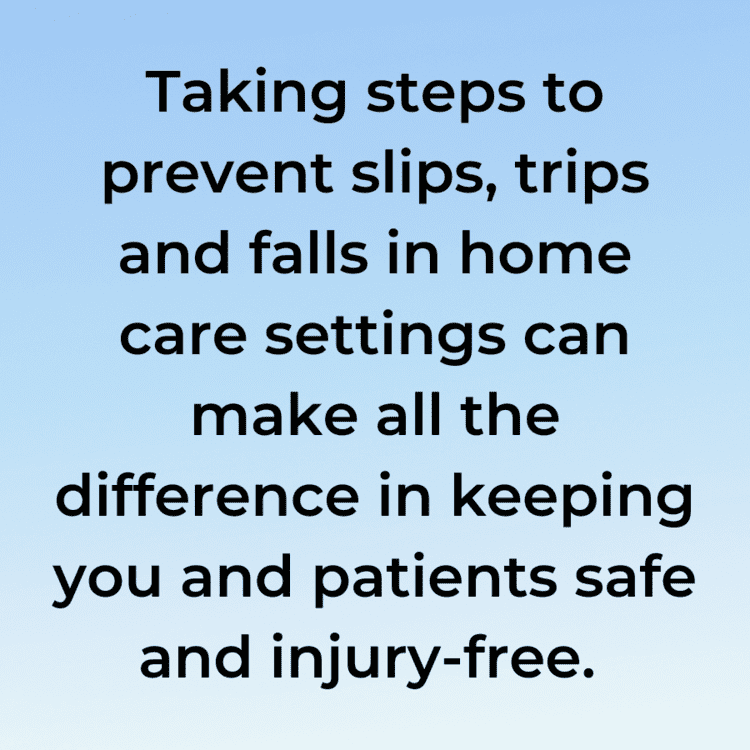
Avoiding Slips, Trips, and Falls in Home Care Settings
Tips for keeping yourself and patients safe in their homes
Caring for patients in their homes can offer many benefits; yet, such care also presents safety risks. In particular, the unique nature of home care settings can make both you and patients more vulnerable to slips, trips and falls. With this in mind, it’s crucial to know how to mitigate these risks and prevent related injuries. Read on for tips to avoid slips, trips and falls in patients’ homes.
Preventing Slips, Trips and Falls

Follow these best practices to limit the likelihood of slips, trips and falls in home care settings:
- Talk to the patient. Certain factors can heighten an individual’s risk of experiencing slips, trips and falls (e.g., health conditions, medications and prior falls). Review these factors with the patient to discuss their specific exposures and determine effective mitigation strategies.
- Promote healthy habits. Upholding a healthy lifestyle can help you and the patient maintain strength and coordination, reducing the risk of slips, trips and falls. As such, it’s best for you and the patient to exercise daily, eat a balanced diet and drink plenty of water. Based on the patient’s health concerns, their exercise regimen may center solely around low-impact activities (e.g., walking or water aerobics).
- Identify and minimize key hazards. Assess the patient’s home for possible slip, trip and fall hazards and address these issues as quickly as possible. Common hazards may include cluttered or obstructed walkways; narrow pathways that don’t permit the use of walkers or other mobility equipment; poorly lit areas; damaged stairs or steps; loose flooring, rugs or carpeting; stray electrical cords; and spilled food or liquids. Be mindful of seasonal hazards, such as entryways getting slippery from rain or snow.
- Leverage assistive devices and materials. If the patient struggles with mobility, use assistive devices and materials to help them move more easily throughout their home and avoid slips, trips and falls. These items could include handrails, armrests, nonslip mats and stair treads, elevated toilet seats, and grab bars for showers and bathtubs. Inspect such items regularly and keep them in good condition.
- Ensure proper footwear. Make sure both you and the patient select supportive footwear with adequate traction (e.g., nonslip tennis shoes).
- Don’t rush. Remain alert of your surroundings and conduct tasks at a safe pace. This is especially important when entering and exiting the patient’s home, moving or walking with the patient, and carrying materials and supplies.
Consult your supervisor for additional safety guidance.
Taking steps to prevent slips, trips and falls in home care settings can make all the difference in keeping you and patients safe and injury-free.

Discussion
There are no comments yet.